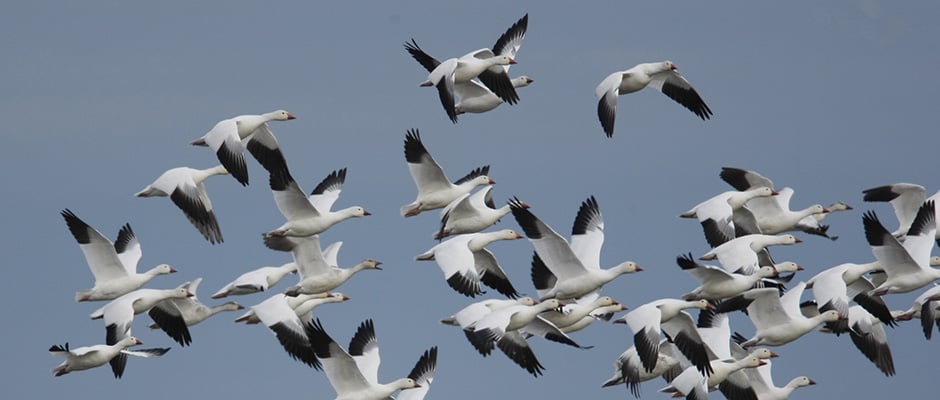Share this article
Thousands of Snow Geese Die in Idaho
About 2,000 snow geese (Chen caerulescens) died midflight in eastern Idaho last week, likely from avian cholera, according to the Idaho Department of Fish and Game.
The snow geese were migrating north to their nesting grounds in northern Alaska from the southwestern United States and Mexico, when a shockingly large number of geese fell from the sky. The presence of dead snow geese was first reported last Friday at Camas National Wildlife Refuge, close to Dubois, Idaho, and then even more dead birds were found in management areas Mud Lake and Market Lake, near the towns of Terreton and Roberts, Idaho.
Idaho Fish and Game announced Tuesday that it believes the reason for the sudden deaths is likely avian cholera —a contagious, bacterial disease that causes blood poisoning in birds across the world. The disease can cause convulsions and erratic flight, according to IDFG. The disease also can infect birds so quickly they might not have symptoms before dying suddenly midflight.
Although the cause of the birds’ deaths have not yet been confirmed, the agency said the “symptoms seem to indicate the disease,” in a news release. Researchers at the IDFG Wildlife Laboratory are in the process of determining if the cause of death for these snow geese is, in fact, avian cholera.
However, IDFG does not know where the snow geese contracted the bacteria. “Outbreaks of avian cholera have occurred sporadically in the region over the past few decades,” said regional fish and game supervisor Steve Schmidt, in a news release.
Schmidt said it’s most important to remove the snow geese carcasses to reduce the spread of the disease to other birds. Volunteers and Fish and Game employees collected the carcasses, and Fish and Game employees will be incinerating them so other birds don’t ingest the bacteria.
In the Mud Lake Wildlife Management Area, biologists reported 20 eagles near the snow geese carcasses. However, biologists are not sure whether or not the eagles will contract the disease, or when, and if they will become infected by avian cholera. According to Schmidt, there also was a dead trumpeter swan (Cygnus buccinator) among the carcasses, which also likely died from avian cholera.
About 10,000 snow geese annually fly through eastern Idaho in March and stop in Idaho’s wildlife management areas, where they spend a few weeks feeding on grain in wheat fields nearby, according to Schmidt.
While avian cholera is devastating to birds worldwide, according to the United States Geographical Survey Health Laboratory, humans are unlikely to become infected by avian cholera. Still, IDFG asks people not to touch the dead birds as this might spread the disease to other wildlife.
Header Image:
Snow geese and Ross’s geese fly through Idaho while migrating north. Last week, 2,000 snow geese were found dead in eastern Idaho, likely from avian cholera.
Image Credit: USFWS Pacific Southwest Region








